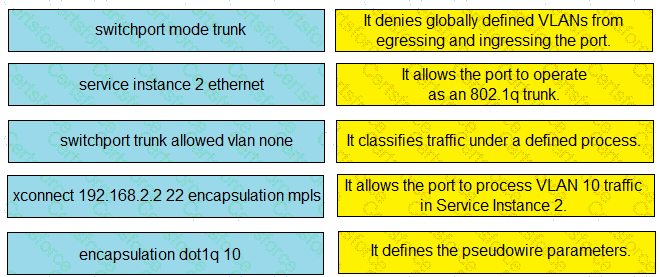Refer to the exhibit.

A customer carrier running MPLS VPN wants to utilize a backbone carrier to forward traffic and exchange VPNv4 prefixes between the two customer carriers networks depicted. Which two sets of routers must establish MP-iBGP sessions? (Choose two.)
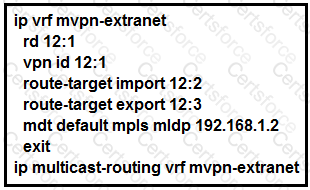
What is the effect of this configuration?
What is a requirement to share VRF reachability information to all members of a VPN when using IPv6?
Refer to the exhibit.

What is shown in this output?
How do PE routers exchange CE routes between remote sites?
Refer to the exhibit.
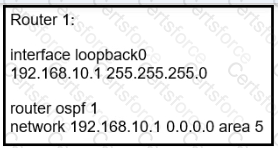
Refer to the exhibit Router 1 is a P router in the ISP MPLS core A connected P router cannot generate an MPLS label for the router 1 loopback0 interface Which action resolves this issue?
Which optional information can be included with an IPv6 ping to support the troubleshooting process?
Refer to the exhibit.

An organization is running H-VPLS on a network comprising four routers in a hub-and-spoke topology with R1 as the hub An engineer added a new spoke with multiple VCs to the network, and now traffic cannot flow properly How should the engineer update the configuration on R1 to correct the problem?
Refer to the exhibit.
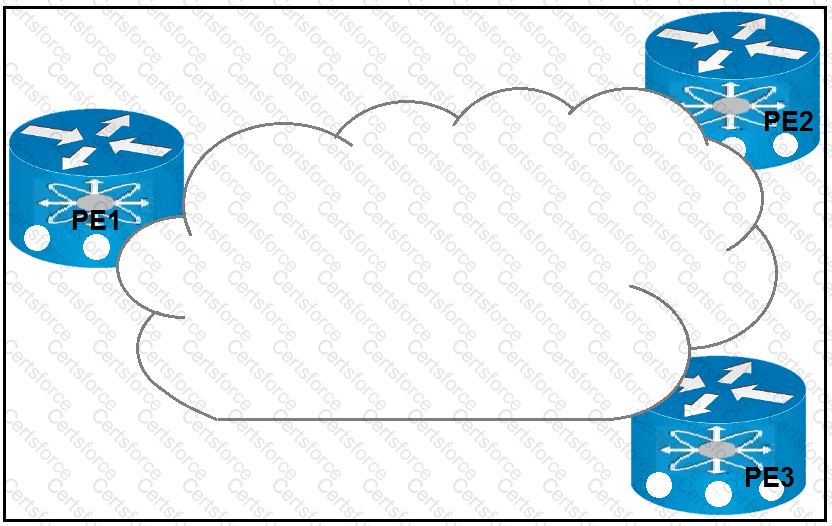
Which result occurs when PE1 learns a new MAC address and all three PEs are enabled with EVPN native?
Refer to the exhibit.
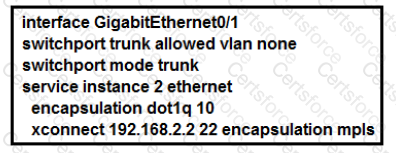
Drag and drop the EVC configuration items from the left onto the correct descriptions on the right.
